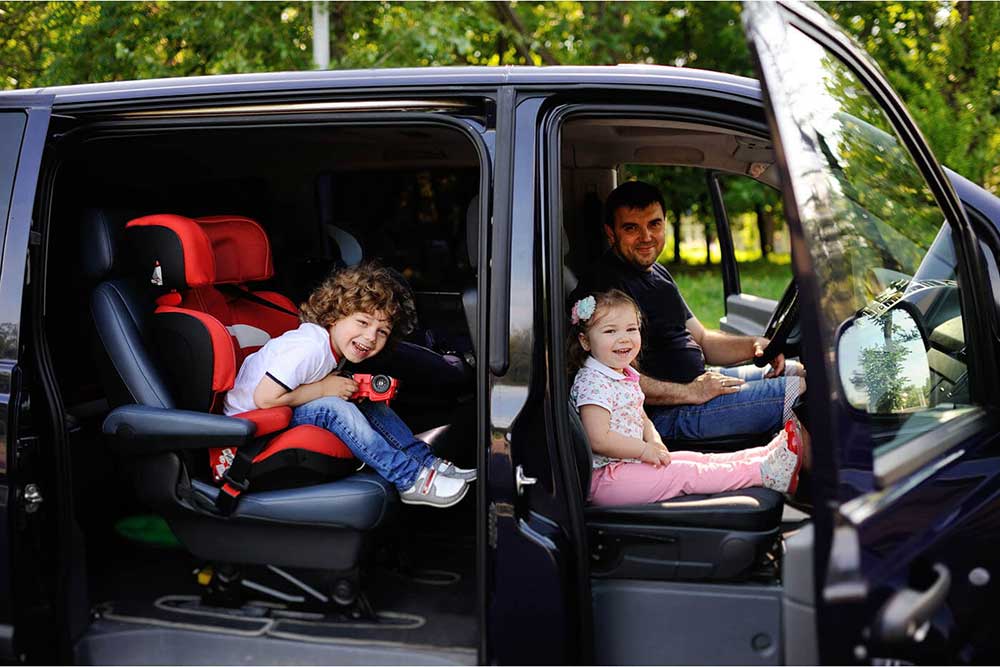Oh, how the mighty have fallen. Once the go-to mode of transportation for families across North America, the minivan has hit hard times in recent years. Thanks to its reputation as the vehicle of choice for those who’ve given up on being cool – along with the rise of the SUV with its associations with adventure and celebrity – minivans are slowly disappearing from roads and showrooms everywhere.
This is unfortunate, because minivans are actually awesome. Don’t believe us? Here are five reasons why.
1. Minivans are designed for a very specific job — moving families and their stuff — and they do it really well
Before minivans, the best option for hauling kids, suitcases, and the family dog was the station wagon, but it was far from perfect. For one thing, it lacked a third row of seating, and its cargo capacity was limited. That all changed in 1984 when the Plymouth Voyager was released. Decked out with fashionable upholstery, faux-wood paneling, and seating for up to seven, it combined the best features of a passenger car with the hauling capacity of a van. The sliding cargo door and low floor made it easy to get passengers in and out, while the up-opening rear hatch and re-configurable seats made it supremely versatile. There’s a good reason that now, almost 40 years later, that design remains essentially unchanged across every brand: because it just works.
2. Minivan designers hustle harder
Because minivans are seen as less cool than SUVs, minivan designers have to work extra hard to make their products more appealing to customers. This results in all manner of innovative add-ons intended to make your life as a minivan owner easier. For example, because kids are both constantly snacking and constantly making a mess, the Chrysler Pacifica is available with an integrated vacuum cleaner – all the better to suck up those goldfish cracker crumbs and spilled Cheerios. The Honda Odyssey, meanwhile, comes with a rear-seat video monitor to keep an eye on the little rugrats, and a rear-seat intercom to tell them to knock it off without having to raise your voice. Genius!
3. Two words: Lexus Minivan
Sure, it’s not available in North America, but the Asia-only Lexus LM shows us what happens when you set out to make the coolest-looking, most decked-out minivan ever. With an interior worthy of a first-class airplane cabin, complete with multi-directional leather seats and a massive infotainment screen, this van would surely make you the envy of all the other parents at soccer practice.
4. Compared to SUVs and crossovers, minivans are pretty affordable — especially once you add options
There’s much to be said for not following the crowd. Because of the popularity of three-row SUVs, automakers can (and do) charge a premium for them. Vans, meanwhile, occupy a part of the showroom more akin to the clearance rack. A loaded-to-the-gills Kia Sedona SX, with leather seats, power doors, and a smartphone-controlled UVO Intelligence system comes in at just under $44,000 brand new, which is $1000 less than the starting price of the new 8-seat Kia Telluride. If you need more all-weather performance, a loaded 2020 Toyota Sienna XLE with AWD will set you back about $54,000 new – a steal compared to the $63,000 starting price of a Toyota Sequoia. Needless to say, lease rates are equally favourable.
5. A van can do anything a sports car can do – just ask the Japanese
If you had a mind to push your family hauler to its limits, you might be pleasantly surprised at what it can do. For proof of this, look to Japan’s
Jeremy Freed is a freelance writer and editor based in Toronto. His writing about fashion, travel, food and design appears in Sharp, Harry and re:Porter magazines, among many others.
